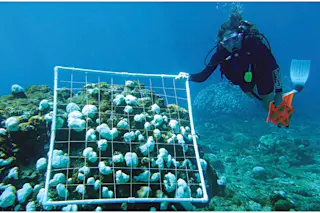In an ambitious attempt to assess how humans are doing as stewards of planet earth, 28 leading scientists have drawn up a list of nine "planetary boundaries" that must not be crossed if we want to avoid drastically changing the global environment and imperiling our own existence. The only problem is, we've already crossed three of those thresholds. The paper, published in Nature (and available for free), aims to define a "safe operating space" for human life on the planet.
It’s a first-draft users’ manual for an era that scientists dub the “anthropocene,” in which nearly seven billion resource-hungry humans have come to dominate ecological change on Earth [Wired.com].
What follows is a list of the nine environmental factors, and how we're doing on living within each limit. 1) Atmospheric carbon dioxide, the main cause of global warming: Obviously, we have trouble with this one. The researchers say the CO2 ...














